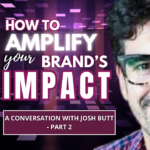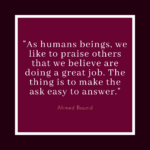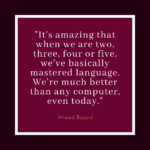“AI, at least right now, is really adept at iteration, but not so adept at innovation. So I think it’s really good at augmenting the creative process, yeah, inspiring, but not necessarily great at coming up with something with all the nuances that, again, at a subconscious level, we might pick up on.” — Steve […]
artificial intelligence
How to Amplify Your Brand’s Impact: A Conversation with Josh Butt – Part 2
How to Amplify Your Brand’s Impact: A Conversation with Josh Butt – Part 2 “Because it’s very difficult to be different and distinctive and you kind of need both of them in this modern advertising world because everything’s so fragmented. Um, people are not just sitting down at the TV at a certain time or […]
The Voice of Tomorrow: An Interview with Ron Jaworski – Part 2
“When we are listening to an audio file created by AI, we try to find where the machine got it from, but when we are listening because we just want to listen, we don’t really care.” — Ron Jaworski This episode’s the second half of my interview with Trinity Audio CEO and ad tech […]
The Voice of Tomorrow: An Interview with Ron Jaworski – Part 1
“In similar ways to when the first iPhone came out and then five years later, ten years later, we looked back and said to ourselves ‘oh my god, that completely changed my life,’ that’s the same thing that’s going to happen with audio and voice.” — Ron Jaworski My next guest is the CEO […]
The Voice of Tomorrow: An Interview With Dr. Ahmed Bouzid – Part 2
“As human beings, we like to praise others that we believe are doing a great job. The thing is to make the ask easy to answer. So if you say ‘can you record a one-minute video,’ they would do it – I’m sure they would all do it – but it would be heavier. The […]
The Voice of Tomorrow: An Interview With Dr. Ahmed Bouzid – Part 1
“I would say that the core driver has always been trying to enable more folks to engage, more people to be able to express themselves. So when I go back and look at all the things in my life, that seems to be the theme.” — Dr. Ahmed Bouzid This episode’s guest is the […]




